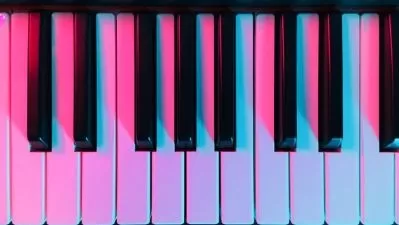About PianoLearn More
The piano needs no introduction. This classical musical instrument has been delighting and entertaining music lovers for centuries. If you love piano music and have always wanted to play, Udemy has lessons that help you learn piano online. Whether you are just starting or are an experienced player looking to improve your technique, Udemy offers a vast range of piano courses to help you get to the next skill level.
Sort by:
Sorting
The newest
Most visited
Course time
Subtitle
Filtering
Frequently asked questions about Piano
Plenty of pianists are completely self-taught. You can learn to play the piano by first familiarizing yourself with the instrument. Learn where middle C is, then learn the notes around it — these repeat themselves every octave or every 12 keys. Learn basic major and minor chords, then practice playing melodies with your right hand along with these chords. Reading music is fairly common with piano, but you can also learn without reading by training your ear. Try to play your favorite songs by sounding out the melodies and/or chords. As you go on, seek out theory such as scales and musical terminology and add these into your regular practice routine. Remember that practicing a little bit every day is far more effective than practicing for a long time every so often, as it builds better understanding and muscle memory. Taking an online course is a great way to learn at your own pace.
It is better to learn chords first. This creates dexterity in your hands and serves as a kind of roadmap of the instrument itself — plus, scales are more complicated and it takes a bit of learning before you can use them in music. Chords, on the other hand, allow you to create music right away and have fun doing it. Whether you sing along to them or begin playing a melody as well, chords are the perfect starting point for a beginner musician. They allow you to get comfortable with rhythm and see patterns in the instrument. Moving on to scales will make more sense after you’ve learned basic chords. For instance, a G major scale moves through a G major chord, touching on all notes in the chord. You will also begin to understand chords better at this point and learn how to invert them, alter them, and create different colors with different notes from the corresponding scale.
To your ear, a major chord naturally sounds “happy” and a minor chord sounds “sad.” While those are two very different emotions, the difference between the chords is quite small — a single note moved just one half-step. That note is the third, and it can be either major or minor (minor is one half-step lower). Take a standard chord like C major, which is composed of any combination of C, E, and G. Pay attention to the middle note, E, which is the major third (named so because it’s the third note of a C major scale). When you play it one half-step lower (so the chord is C, Eb, G), the chord becomes “sad.” This is true no matter which combination of these three notes you play or how you rearrange them. The same is true of all chords, which can be either major or minor.
The answer depends on which instrument appeals to you and feels more intuitive. For most people, it is easier to start on piano, but it is a bit easier to reach basic proficiency on the guitar. The reason for this is that the piano’s learning curve can slow down as students begin using both hands in more complex ways. This includes playing both chords and melodies at the same time. Guitars are a bit different. Since playing anything on a guitar requires some finger strength and a bit of dexterity, there is a short challenging period in the very beginning. However, once you can hold the strings down and play several chords, it becomes easier to learn new chords. This means you will likely be able to play songs on guitar more quickly than you might on piano. Different people experience this in different ways, though, so pay attention to which instrument is more fun and interesting to you.







